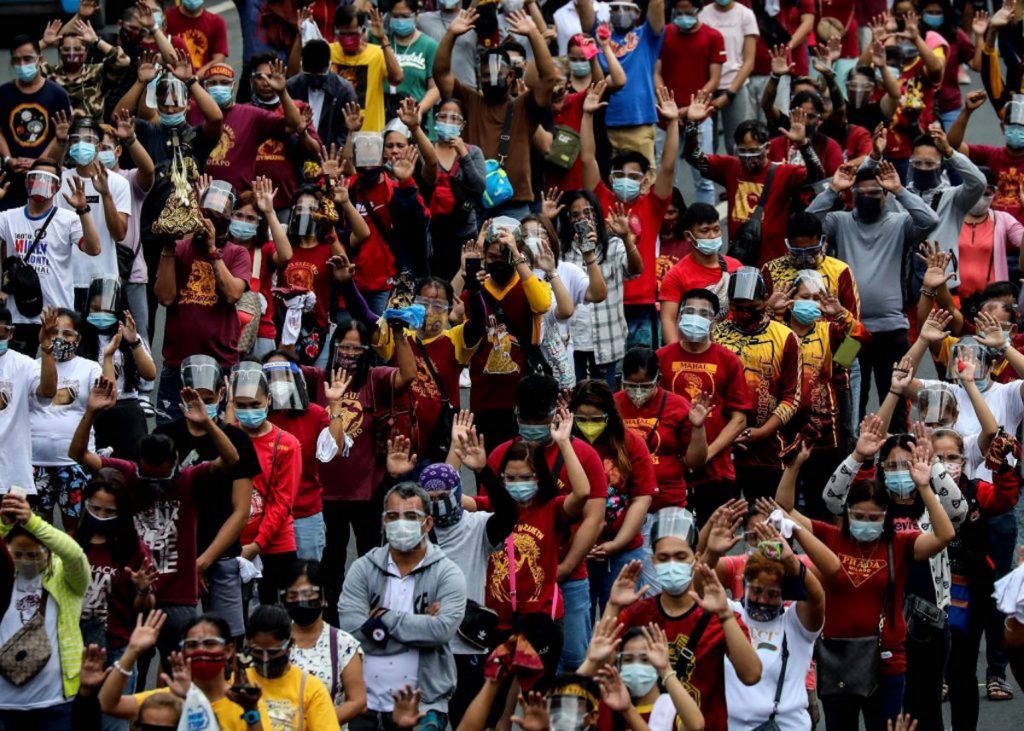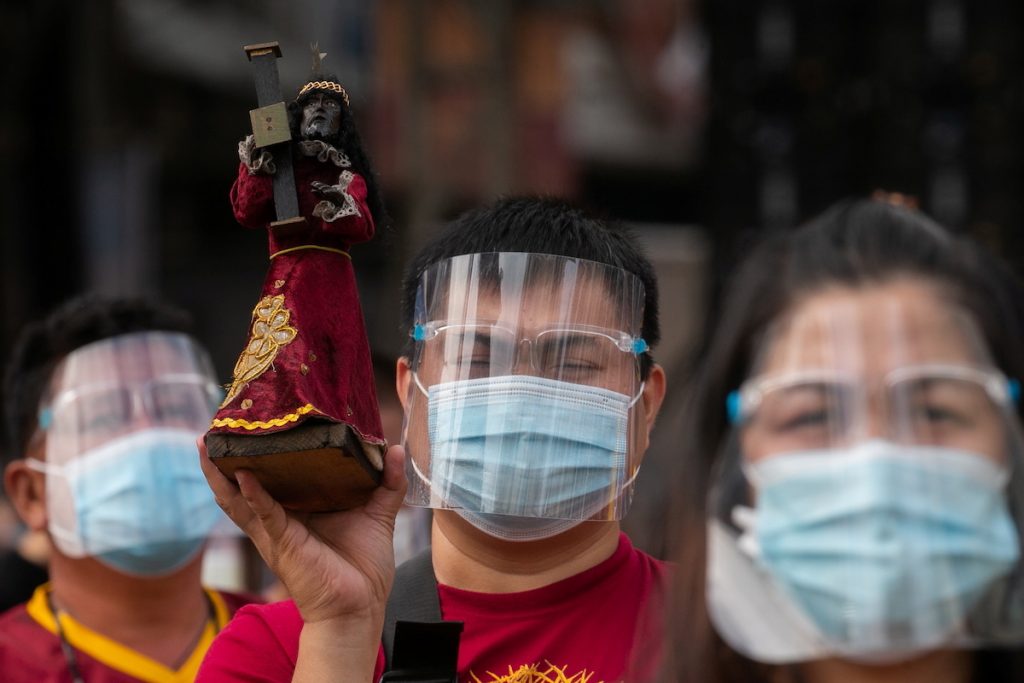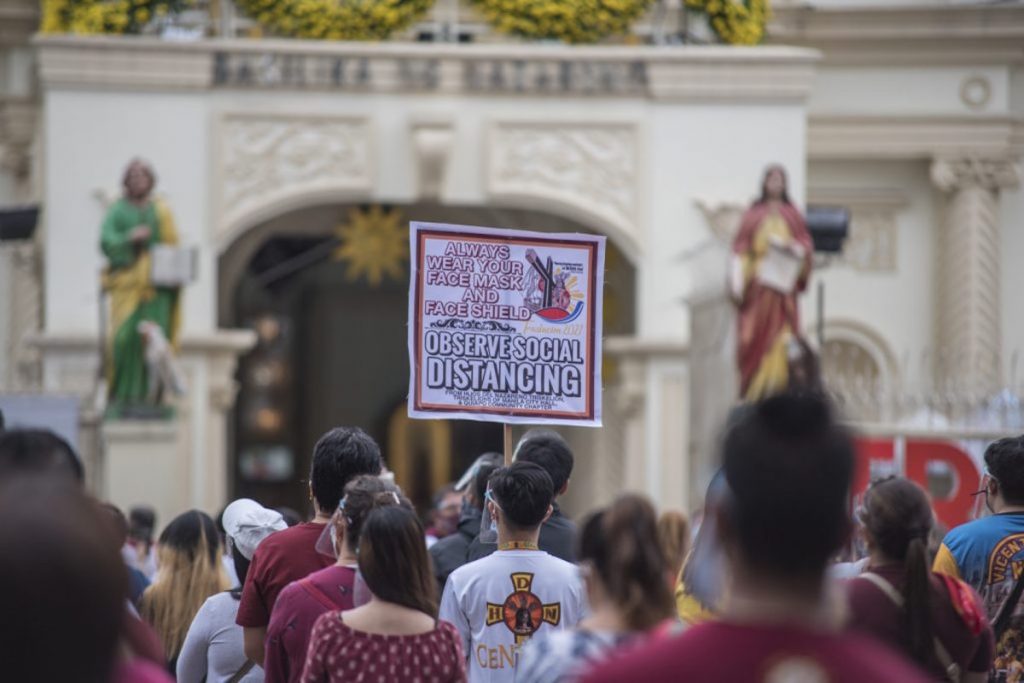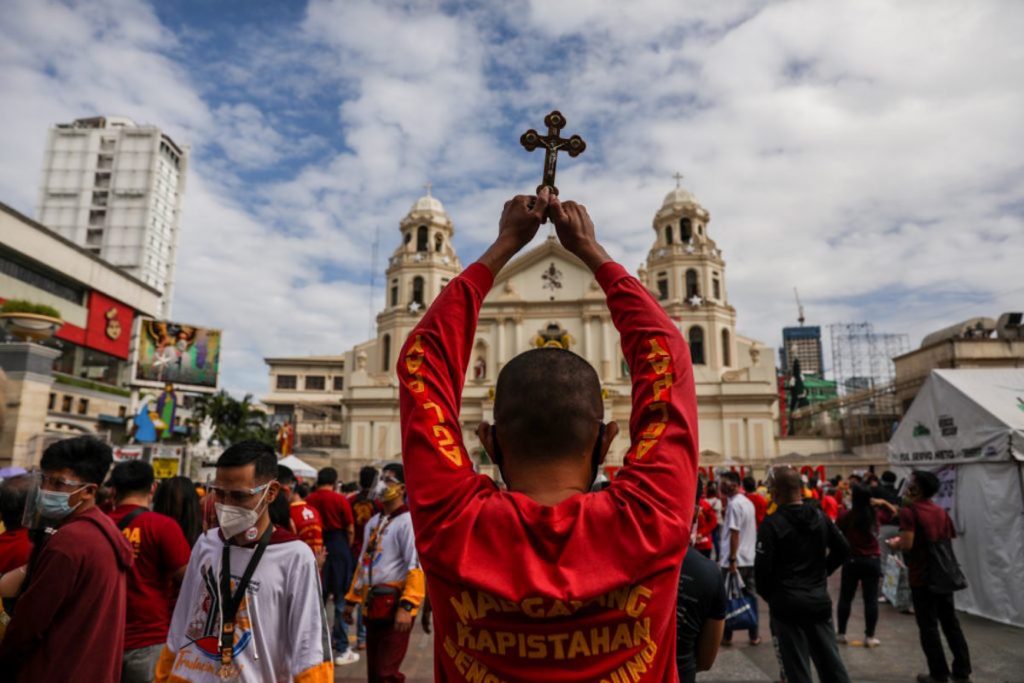Despite health warnings, hundreds of thousands of Filipino Catholics went out of their homes in Manila on Jan. 9, to venerate a centuries-old wooden statue of the Black Nazarene.
Authorities said close to half a million people flocked to the Minor Basilica of the Black Nazarene in the city’s Quiapo district despite warnings against the spread of the coronavirus disease.
The Philippines recorded a surge of new COVID-19 cases with 1,952 more infections on Jan. 9. The number is the highest daily record in the past three weeks.
The total tally is now at 485,797 with 5.5 percent or 26,784 active cases, according to the Department of Health. Of these active cases, at least 83.1 percent have mild symptoms.
Health experts earlier warned of a possible post-Christmas season jump in cases amid backlogs in reporting.
The Department of Health projected the case count in the capital to spike to as many as 4,000 a day by the end of January amid leniency during the holiday celebrations.
Authorities cancelled the annual procession, dubbed “traslacion,” or “transfer,” of the life-sized image of the Black Nazarene, the country’s largest religious event that usually draws millions of devotees.
“We’re really going to need a miracle to stop a super-spreader event in Quiapo right now. Please don’t go,” said Edsel Salvana, a Department of Health adviser in a post on Twitter.
The Philippine National Police deployed at least 6,000 officers to monitor the entry points to the church in Manila and to enforce physical distancing.
“We know that social distancing violations will lead to increased number of cases,” tweeted Dr. Tony Leachon, former adviser of the government’s coronavirus task force.

Praying for an end to the pandemic
“I am not afraid to go here even with the risk of COVID-19 because I have faith in Jesus the Nazarene,” Arjay Echon, 29, a supermarket employee and a devotee for seven years, told Reuters.
“Every year, every week I go to church,” he said, adding that he prayed for an end to the pandemic.
“My personal prayer is good health for my family …. I pray for a better Philippines this 2021 and for COVID-19 to end,” said Prubancio Sarasin, a 56-year-old security guard.
Even those who were not able to physically attend the celebration in Quiapo posted their prayers for an end to the pandemic on social media.
“Pray for our country, end the pandemic, and all the calamities, please heal our land,” read a post by Susan Albanez.
“Have mercy on us Lord. Please end this COVID-19. Protect us your people, Lord,” said Shay Pascual.
“We pray for an end to the pandemic. We pray for a better 2021,” said Monsignor Hernando Coronel, rector of the basilica in his homily during Mass.
“We thank the good Lord because there is a vaccine and especially that this vaccine be given to the poor so we can go back to our normal lives and recover our jobs,” said the priest.

Auxiliary Bishop Nolly Buco on Antipolo reminded the faithful to always observe health protocols, saying that acts of faith come with responsibility.
“We have to cooperate as believers because we want to be an instrument to maintain the health of each other,” said the prelate during Mass on the eve of the celebration.
“Our lives are not just random [acts], part of it is sacrifice,” he said, adding that the celebration is an opportunity to ask God for blessings, strength, and for an end to the health crisis.
“He (Jesus) reminds all of us believers that this (pandemic) is not forever. Let us just continue to trust,” said Bishop Buco.
Expression of faith
Bishop Broderick Pabillo, apostolic administrator of the Archdiocese of Manila, expressed his gratitude to the faithful for celebrating the feast of the Nazarene despite the pandemic.
“To you devotees, thank you … your faith is very touching,” said the prelate during the fiesta Mass celebration on Jan. 9.
Thousands of people gathered outside the church in Quiapo as early as 4 am for the Mass celebrated by Bishop Pabillo.
Only 400 people were allowed inside the church as part of strict health restrictions.

Other devotees attended Mass in nearby churches where replicas of the image of the Black Nazarene were also displayed.
“The Black Nazarene is a magnet, a very strong magnet that attracts people to Him,” said Bishop Pabillo in his homily.
He said the pandemic might have prevented people from doing things that they were used to, “but it brought the people closer to Jesus.”
“We better show our love for Him in different ways of expressing our faith and love for God,” said the bishop.
Bishop Pabillo lauded the devotees, saying their “discipline … is truly remarkable.”
“They expressed their devotion by coming even at great sacrifice but they are very considerate of the protocols and very patient indeed,” he said.
“It cannot be said that the devotees of the Nazarene are unruly,” added the bishop.
Photos that circulated in social media showed devotees wearing face masks and face shields while maintaining physical distancing.
“We are very happy because the devotees exhibited self-discipline and there was orderliness and systematic way of entering the church,” said Monsignor Hernando Coronel, rector of Quiapo church.
The priest said many devotees heeded the call to stay home and follow the activities online.
“We discouraged the people from coming and I think many did and followed the celebration online or in their own parishes,” said Monsignor Coronel.
Every year, millions of people flock to Manila’s Quiapo district to mark the anniversary of the 1787 traslacion of the image from a church in the old city of Manila to the church in Quiapo.
The traslacion, which most Filipinos dubbed as the feast of the Black Nazarene, is one of the biggest religious celebrations in the country with an estimated 10 million devotees attending.

The image of the Black Nazarene, a life-size Jesus Christ carrying his cross, was supposedly made by a Mexican sculptor and was brought to Manila via a galleon from Acapulco, Mexico, on May 31, 1606.
Traditional accounts attribute the color of the image to votive candles burning before the image, although the most famous story is that it was charred by a fire on the galleon that brought it from Mexico.
The image was first enshrined in the Church of San Juan Bautista of the Augustinian Recollects in Bagumbayan in Manila until it was demolished in 1644.
In 1608, the image was transferred to the church of San Nicolas de Tolentino (popularly known as the Recoletos Church) inside Intramuros.
It was enshrined in the high altar until both the church and the image perished as a result of the bombardment and the flames of Manila during its liberation in 1945.
On Jan. 9, 1787, the Augustinian Recollects donated a copy of the image to the church in Quiapo. It started the tradition of the traslacion from the church of San Nicolas de Tolentino to Quiapo.
With Reuters






